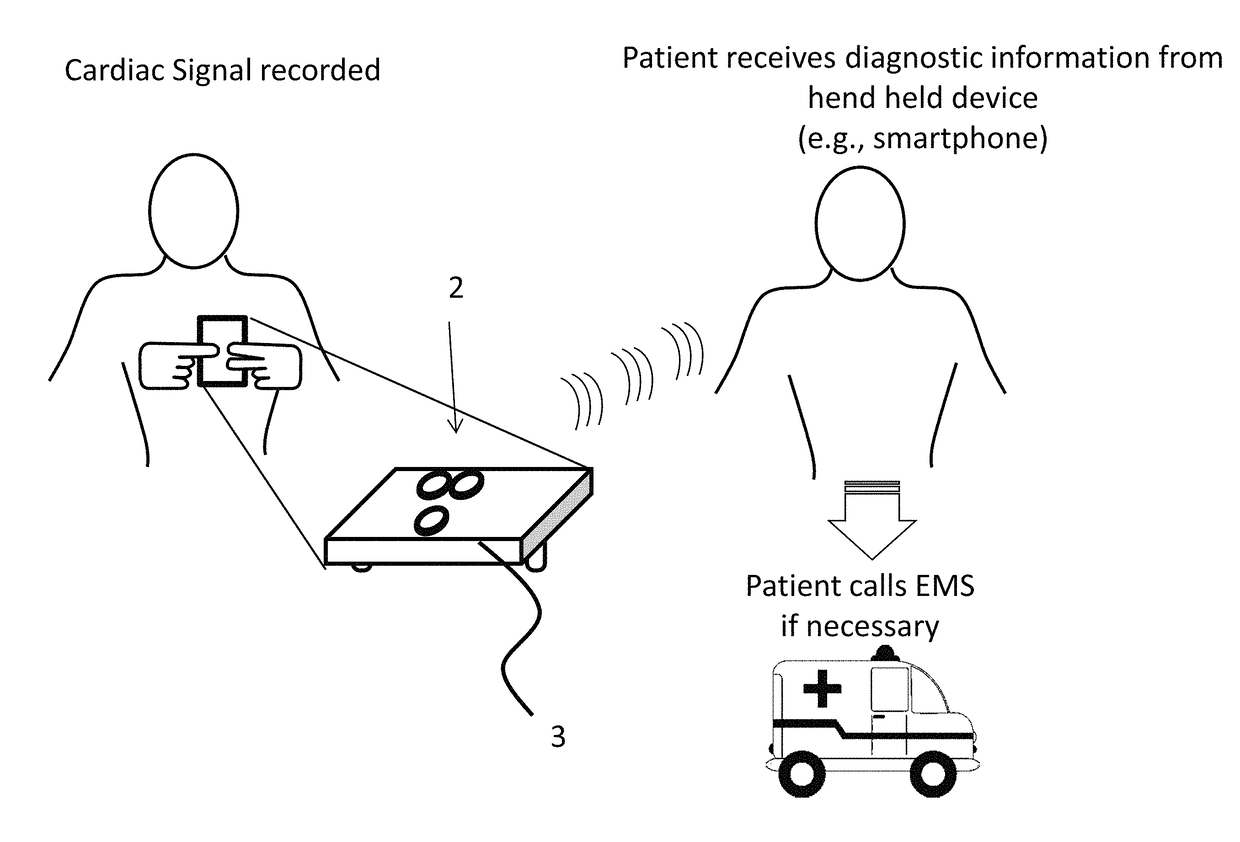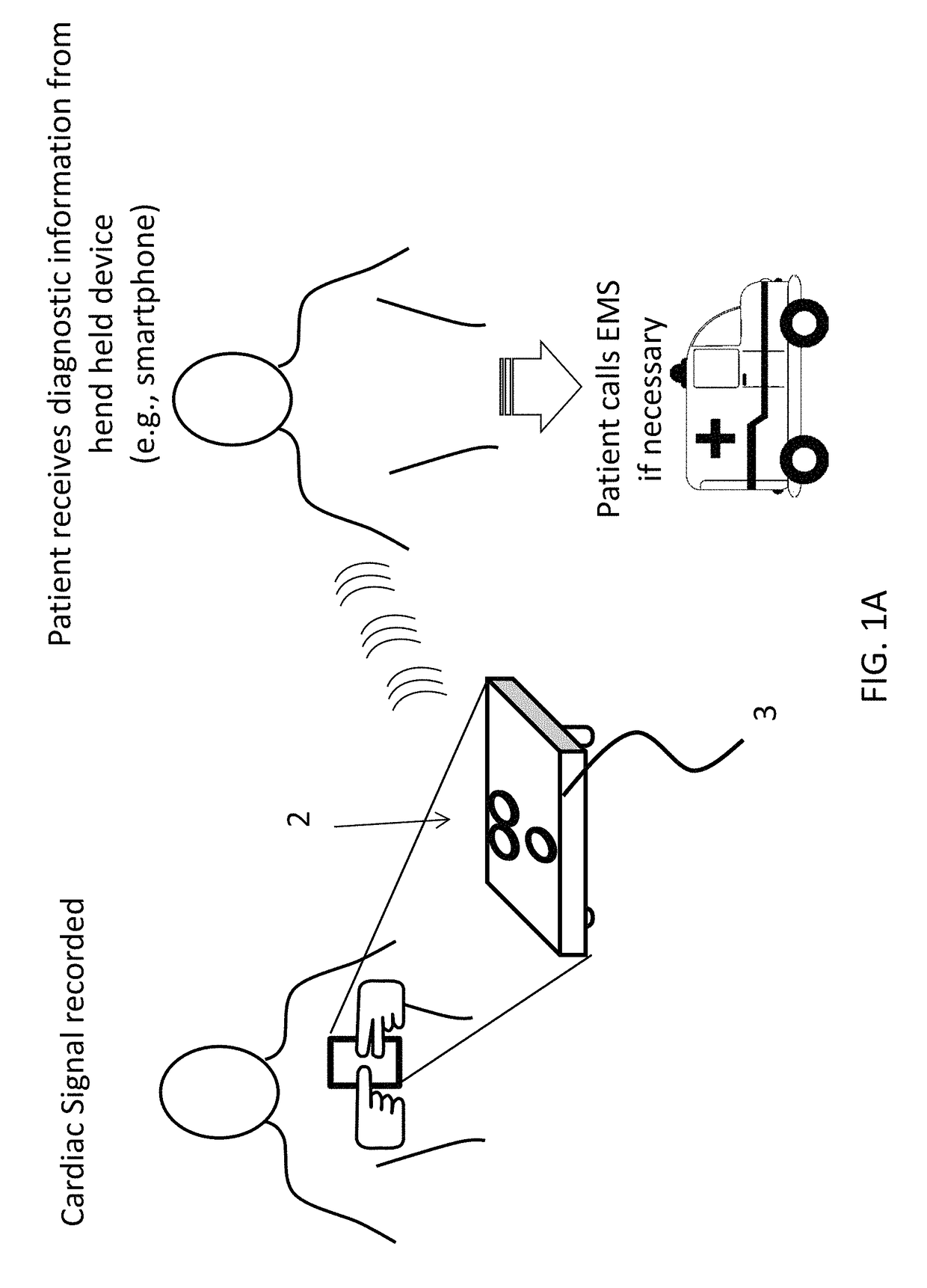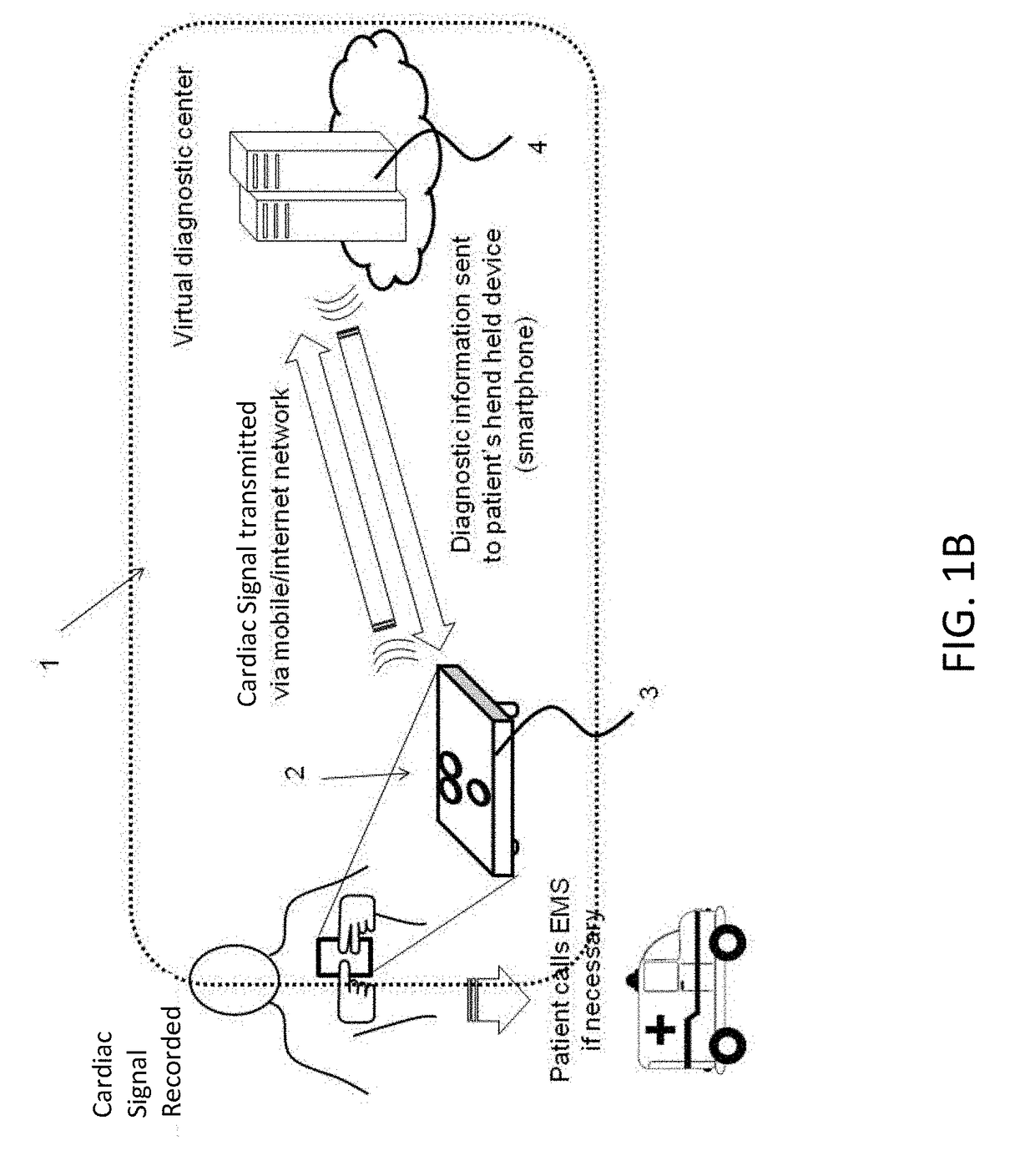Mobile three-lead cardiac monitoring device and method for automated diagnostics
a cardiac monitoring and three-lead technology, applied in the field of bioelectric signal recording methods and methods, can solve the problems of difficult, unreasonable, and inability to reliably use for a patient to record a full 12l ecg by himself, and achieve the effect of eliminating baseline wandering and/or muscle noise, and avoiding power line interferen
- Summary
- Abstract
- Description
- Claims
- Application Information
AI Technical Summary
Benefits of technology
Problems solved by technology
Method used
Image
Examples
examples
[0127]A clinical study was done to evaluate the diagnostic accuracy of the methods described above for detecting myocardial ischemia provoked by balloon inflation in coronary arteries during a PCI (Percutaneous Coronary Intervention) procedure.
[0128]In this example, data was acquired continuously. Continuous data from standard 12 lead ECG with additional three special leads were obtained from each patient during the entire period of balloon occlusion, and for a short period before and after. Target duration for balloon occlusion was at least 90 sec if the patient is stable. In each patient, one baseline recording was taken prior to the beginning of the PCI procedure, and one pre-inflation during the procedure, prior to first balloon insertion. In each lesion / intervention site, one inflation recording was taken just before the balloon deflation. The analyzed data set contains ECG recordings of 66 patients and 120 balloon occlusions (up to three arteries inflated per patient).
[0129]Da...
PUM
 Login to View More
Login to View More Abstract
Description
Claims
Application Information
 Login to View More
Login to View More - R&D
- Intellectual Property
- Life Sciences
- Materials
- Tech Scout
- Unparalleled Data Quality
- Higher Quality Content
- 60% Fewer Hallucinations
Browse by: Latest US Patents, China's latest patents, Technical Efficacy Thesaurus, Application Domain, Technology Topic, Popular Technical Reports.
© 2025 PatSnap. All rights reserved.Legal|Privacy policy|Modern Slavery Act Transparency Statement|Sitemap|About US| Contact US: help@patsnap.com



